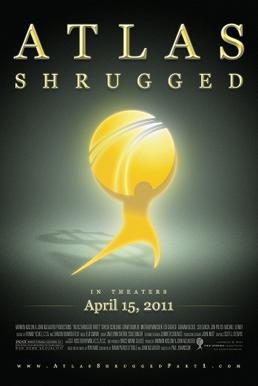It’s 2016, and the world faces economic turmoil. Prominent business leaders are disappearing left and right, and Washington insiders are lobbying for new regulations to “fix” the economy. Amid this backdrop, capable, strong-willed railroad executive Dagny Taggart (Taylor Schilling) butts heads with her incompetent, insecure brother James (Matthew Marsden). She is concerned about serving her customers and turning a profit; he wants to project a good company image and gain political influence. Meanwhile, self-made industrialist Hank Reardon (Grant Bowler) supports his ungrateful wife, mother, and brother while working long hours to maximize his gains. His new alloy, Rearden Metal, could be stronger and cheaper than anything on the market, which motivates his competitors to turn the tides of public and official opinion against it. As Dagny and Hank form a partnership, the efforts to hinder their progress redouble. Lurking at the edges of the conflict is a question no one can answer: who is John Galt?
In the 50-plus years since Ayn Rand’s 1,300-page novel was published, there have been numerous attempts to adapt Atlas Shrugged for the big screen. They have all met with failure for one reason or another; namely, a lack of final approval from Rand and her intellectual heirs. Enter businessman John Aglialoro, who bought up the rights and produced a feature-length film in five weeks on a $10 million shortly before his option was about to expire. Considering those circumstances – and the sheer scope of the source material – Atlas Shrugged Part I could have turned out a lot worse. But the avoidance of disaster should not be taken as proof of success.
The film’s biggest asset is its aesthetics. There are frequent shots of trains racing across the Rocky Mountains. These contrast nicely with the stately boardrooms of the Taggart offices and the sleek, cold confines of Rearden’s operation. It’s a great-looking film not just for the budget, but for any budget.
The cast too must be commended. Led by unknowns Schilling and Bowler, they go a long way toward humanizing Rand’s characters without compromising them. The author regarded character as little more than a vessel for transmitting ideas. By not treating their roles as cartoons, the actors and actresses allow those ideas to exist in human terms rather than at a theoretical level. In addition to the two leads, Marsden makes for a loathsome, petty James. Michael Lerner, who plays slick lobbyist Wesley Mouch fittingly bears more than a passing resemblance to Chris Dodd and the late Ted Kennedy as he drops empty platitudes about “the good of the people” while increasing his own power.
The film’s major deficiency is its script. It’s faithful to the novel, and therein lies a major liability. To put it simply, this is an immensely talky film. Despite the grandiose music, there is a train wreck in the beginning, a fire at the end, and nothing but a series of conversations in between. This wouldn’t be a problem if Rand or screenwriter Brian Patrick O’Toole were David Mamet, Aaron Sorkin, or Kevin Smith, but they don’t even come close. The political pronouncements offered by the mysterious figure in black (SPOILER: it’s John Galt) are particularly awkward. Worse, the film stops just as the plot picks up. This would be fine if this were a TV miniseries or even (ala Lord of the Rings) a situation where you knew a sequel was just around the corner, but that isn’t the case here.
To sum up, when all the polarization over the novel and its creator’s politics are stripped away, you are left with a handsome, earnestly acted, turgidly paced film that feels nakedly incomplete. It’s a valiant attempt, but, as even (and, perhaps, especially) meritocratic devotees of Objectivism will realize, results are what matter most.
6.5/10

No comments:
Post a Comment